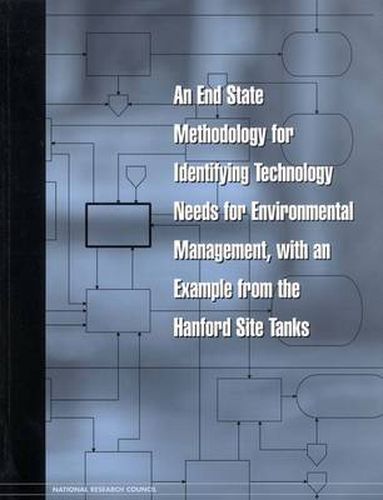An End State Methodology for Identifying Technology Needs for Environmental Management, with an Example from the Hanford Site Tanks
National Research Council,Division on Earth and Life Studies,Commission on Geosciences, Environment and Resources,Committee on Technologies for Cleanup of High-Level Waste in Tanks in the DOE Weapons Complex

An End State Methodology for Identifying Technology Needs for Environmental Management, with an Example from the Hanford Site Tanks
National Research Council,Division on Earth and Life Studies,Commission on Geosciences, Environment and Resources,Committee on Technologies for Cleanup of High-Level Waste in Tanks in the DOE Weapons Complex
A major issue in the cleanup of this country’s nuclear weapons complex is how to dispose of the radioactive waste resulting primarily from the chemical processing operations for the recovery of plutonium and other defense strategic nuclear materials. The wastes are stored in hundreds of large underground tanks at four U.S. Department of Energy (DOE) sites throughout the United States. The tanks contain hundreds of thousands of cubic meters of radioactive and hazardous waste. Most of it is high-level waste (HLW), some of it is transuranic (TRU) or low- level waste (LLW), and essentially all containing significant amounts of chemicals deemed hazardous. Of the 278 tanks involved, about 70 are known or assumed to have leaked some of their contents to the environment. The remediation of the tanks and their contents requires the development of new technologies to enable cleanup and minimize costs while meeting various health, safety, and environmental objectives.
While DOE has a process based on stakeholder participation for screening and formulating technology needs, it lacks transparency (in terms of being apparent to all concerned decision makers and other interested parties) and a systematic basis (in terms of identifying end states for the contaminants and developing pathways to these states from the present conditions). An End State Methodology for Identifying Technology Needs for Environmental Management, with an Example from the Hanford Site Tanks describes an approach for identifying technology development needs that is both systematic and transparent to enhance the cleanup and remediation of the tank contents and their sites. The authoring committee believes that the recommended end state based approach can be applied to DOE waste management in general, not just to waste in tanks. The approach is illustrated through an example based on the tanks at the DOE Hanford Site in southeastern Washington state, the location of some 60 percent by volume of the tank waste residues.
This item is not currently in-stock. It can be ordered online and is expected to ship in approx 4 weeks
Our stock data is updated periodically, and availability may change throughout the day for in-demand items. Please call the relevant shop for the most current stock information. Prices are subject to change without notice.
Sign in or become a Readings Member to add this title to a wishlist.

